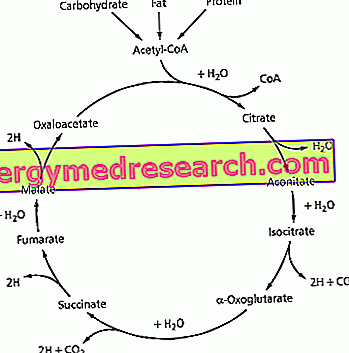How to prepare bread
The preparation of the bread consists of various phases.
MIXING : addition of water to the flour, then hydration of the proteins - with the formation of gluten - and of the starch granules, which are soaked becoming gelatinous.
LEAVENING : the yeasts transform glucose into carbon dioxide and ethyl alcohol, giving rise to small quantities of aromatic substances. The first nourishment of the yeast is given by the small percentage (1.5%) of dextrin and glucose contained in the flour; in the latter there are also enzymes, in particular alpha-amylases, which during the leavening digest starch, supplying the yeasts with the glucose necessary for fermentation.

FORMING : transformation of the dough into typical shapes in relation to local habits, followed by a short and further leavening period.
COOKING : generally takes place in electric ovens, set at a temperature of 200 - 300 ° C, which is maintained for 15 '- 60' depending on

Very important transformations take place during cooking. After baking, the temperature of the bread goes from environmental values to higher levels, rising uniformly inside and outside the product; up to 35-40 ° C the yeasts continue to proliferate and therefore an increase in the dough is noticed, exactly as it happens when you bake a cake. Exceeded 45-50 ° C, the yeasts begin to die and the leavening ceases; at the same time, the water evaporates, the gluten bonds become stiff and the starch solidifies, giving the dough a greater consistency. At around 100 ° C, the crust starts to form on the surface, very important because it prevents the internal water from continuing to evaporate, maintaining the softness of the crumb. Then the outside temperature continues to rise, but the internal temperature remains constant thanks to the isolation of the crust. On the surface, meanwhile, we are witnessing the cameralisation of sugars, which leads to browning of the crust and gives the bread its characteristic smell of cooked. There is also a reaction between the sugars and amino groups of proteins (called the Maillard reaction or non-enzymatic browning), from which they originate yellow-brown compounds that give the product the classic color of baked bread. This very complex reaction occurs in all the cooking processes, including that of meat (especially when grilled) and leads to the formation of numerous compounds not yet fully identified.
| BREAD: TRANSFORMATION DURING COOKING | |
| 30 ° C | Thanks to the intensification of fermentation and the enzymatic production of simple sugars starting from starch, which softens and plasticizes, gas expansion begins; |
| 45 ° - 50 ° C | Inactivation and death of microorganisms responsible for leavening (saccharomycetes); |
| 50 ° - 60 ° C | Starch begins to solidify and proteins begin to denature; |
| 60 ° - 80 ° C | The starch is already solid and the activity of the enzymes stops. The alcohol formed evaporates and the caramelization of the sugars begins; |
| 100 ° C | The dough becomes stiff, the production of water vapor and the formation of the crust begin; |
| 110 ° -120 ° C | Formation of a light yellow color on the crust (due to dextrins); |
| 130 ° -140 ° C | Formation of a brown color on the crust; |
| 140 ° - 50 ° C | Caramelization (tanning of the crust); |
| 150 ° -200 ° C | Formation of aromatic crunchy products. |
Homemade Rustic Bread - Alice's videoricette on MypersonaltrainerTv
Recipe to prepare a rustic bread directly to your home, explained in every detail. Follow our video recipe
Rustic bread at the My-personaltrainer
X Problems with video playback? Reload from YouTube Go to Video Page Go to Video Recipes Section Watch the video on youtubeTypes of bread
SPECIAL BREADS: butter, olive oil or lard can be added, in quantities not less than 4.5% on the dry substance, but also milk and milk powder, grape must, raisins, figs, olives, etc. .
The special bread must be kept in separate shelves with respect to the common bread and bearing the indication of the added ingredient.
- CASSETTA OR PANCARRE 'BREAD: contains a reasonable amount of moisture, important for long-lasting freshness.
- ROASTED BREAD: most of the water content is eliminated (4-8%).
- GRISSINI, CRACKERS
- PROTEIN BREAD
DETERMINATION OF HUMIDITY | |
Up to 70 grams | Maximum humidity 29% |
From 100 to 250 grams | Maximum humidity 31% |
From 300 but 500 grams | Maximum humidity 34% |
From 600 to 1000 grams | Maximum humidity 38% |
Over 1000 grams | Maximum humidity 40% |
In case of wholemeal bread + 2% | |
Homemade Vegetable Seeds Sandwiches - Alice's videoricette
Recipe for preparing vegetable seed sandwiches directly at your home. Alice and My-personaltrainerTv explain in detail how to prepare this delicious bread embellished with unsaturated fats and vitamin E, naturally contained in vegetable seeds.
Buns covered with seeds
X Problems with video playback? Reload from YouTube Go to Video Page Go to Video Recipes Section Watch the video on youtube



